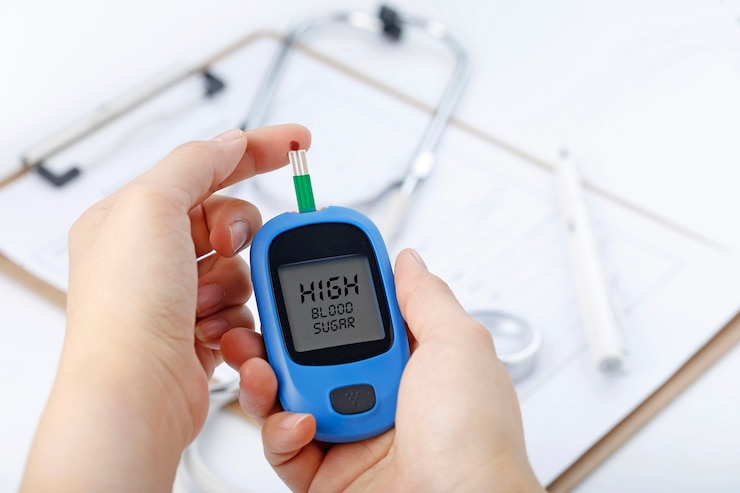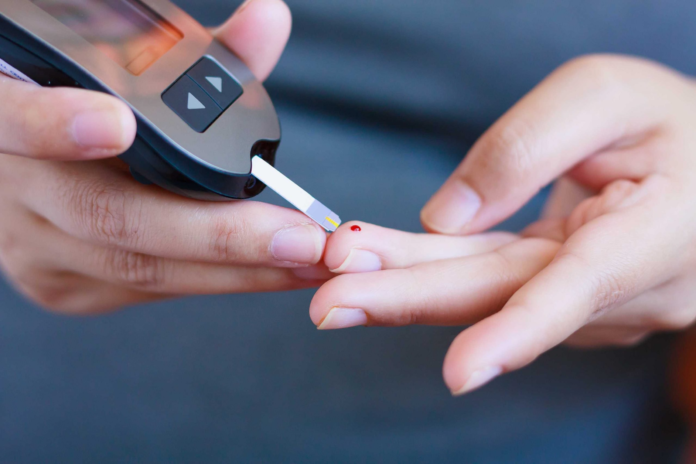Insulin: a word that might conjure images of syringes and vials, but it’s so much more than that! This essential hormone plays a starring role in keeping our blood sugar balanced, and understanding it better can empower us to manage our health. In this blog, we’ll be demystifying insulin, diving into the different types available, exploring convenient delivery methods, and equipping you with the knowledge to manage your insulin needs effectively.
What is insulin?
Insulin, a naturally occurring hormone produced by your pancreas, is key to unlocking your cells’ ability to absorb sugar (glucose) for energy. When your pancreas doesn’t make enough insulin or your body resists its effects, sugar builds up in the bloodstream, leading to high blood sugar levels (hyperglycemia) and, ultimately, diabetes. Fortunately, for those living with diabetes, manufactured insulin exists. This life-saving medication comes in various forms, and for many, an insulin pump provides a convenient and precise way to deliver insulin. Unlike traditional injections, an insulin pump offers continuous delivery of a basal dose throughout the day, mimicking the body’s natural insulin release. Additionally, the pump allows for programmed bolus doses before meals to address rising blood sugar levels. With proper training and adjustments, an insulin pump can become a powerful tool for managing diabetes and achieving optimal blood sugar control.
What does insulin do?
Imagine your blood sugar as a delivery truck full of glucose, the body’s preferred fuel source. This glucose comes from your diet and stored reserves. But the car can’t unload its cargo without insulin, the key that unlocks the doors of your cells. Insulin, produced by your pancreas, acts as this vital key, allowing glucose to flow from the bloodstream into your cells, where it’s used for energy. If your body doesn’t make enough insulin or your cells become resistant to its effects, the glucose-laden trucks get backed up in your bloodstream, leading to high blood sugar and, eventually, diabetes. In these cases, people with diabetes rely on manufactured insulin to manage their condition. For many, insulin syringes provide a crucial tool. These syringes come pre-filled or require you to measure the precise dose, allowing for direct insulin injection to mimic the body’s natural production. With proper technique and following your doctor’s instructions, insulin syringes can effectively deliver the key that unlocks cellular doors and helps manage blood sugar levels.
Does insulin lower or raise blood sugar?
Imagine your blood sugar as sugar cubes in your bloodstream. Insulin, a hormone your pancreas makes, acts like a key that unlocks your cells, allowing sugar cubes to enter and fuel your body. Glucagon, another hormone, is like a reserve key, raising blood sugar when it gets too low. In diabetes, the body either doesn’t make enough insulin or can’t use it properly, leading to high blood sugar. Manufactured insulin helps by mimicking the body’s natural key, but too much can cause low blood sugar (hypoglycemia). If this happens, you’d need sugar to raise it back up. In severe cases, a glucagon injection might be required. Talk to your doctor about managing your blood sugar and whether glucagon suits you.
You may also find this helpful;
Where is insulin produced?
The pancreas wears two important hats in our digestive system. One well-known function is the production of insulin. More specifically, beta cells nestled within the islets of Langerhans act as the body’s insulin factory, releasing this hormone directly into the bloodstream. Insulin’s role is crucial, acting like a key to unlocking cells and allowing them to absorb glucose, the body’s main fuel source. Interestingly, some forms of manufactured insulin are remarkably similar to what our bodies produce. Insulin from humans and cows are identical, with slight variations affecting absorption rates. The pancreas’ other function is less celebrated but equally important: digestion. Here, the pancreas takes on an exocrine role, secreting enzymes through ducts to break down proteins, fats, and carbohydrates in the small intestine, ensuring we get the most out of our meals.

What conditions involve issues with insulin?
Our bodies walk a tightrope with insulin. When there’s not enough or the body can’t use it properly, blood sugar climbs, leading to different types of diabetes. Type 1 diabetes is an autoimmune disease where the body attacks insulin-producing cells. Type 2 and gestational diabetes happen when cells resist insulin’s effects. In rare cases, a tumor in the pancreas can cause excessive insulin production, leading to low blood sugar.
What are the types of insulin used for diabetes?
Insulin isn’t a one-size-fits-all solution. There are many types, each with different speeds and durations of action. Most insulin is delivered through injections, either with needles, pens, or, for a more continuous approach, an insulin pump. Inhaled insulin is another option for rapid-acting needs. Your doctor will tailor your insulin regimen to match your specific needs. Rapid-acting insulin starts working within minutes and lasts a few hours, making it ideal for pre-meal coverage. Regular insulin follows a similar timeline. For longer-lasting control, intermediate-acting insulin provides coverage for most of the day. Long-acting and ultra-long-acting insulins offer the most extended coverage, with some lasting up to two days. Insulin pumps can be programmed to deliver a continuous flow of long-acting insulin and boluses of rapid-acting insulin before meals. This flexibility allows precise control and mimics the body’s natural insulin release patterns.

What are the side effects of insulin?
The most common side effect of insulin treatment is low blood sugar (hypoglycemia), which happens when you take too much insulin to meet your body’s needs. While less frequent, other potential side effects can occur. Injecting insulin in the same spot repeatedly can lead to skin reactions like lumps or indentations, known as localized lipodystrophy. This can affect insulin absorption, so rotating injection sites is important. In rare cases, allergic reactions may develop, causing pain, burning, and redness around the injection site. Lastly, there’s a very small chance of your body producing antibodies against manufactured insulin, as it’s not identical to the natural kind. These antibodies might hinder the effectiveness of insulin, requiring higher doses to manage blood sugar.

What are the sites for insulin injection?
Picking the right spot for your insulin injection is key. Areas with a good amount of fatty tissue, like your abdomen (at least 2 inches from your belly button), thighs, upper arms, and buttocks, are all fair game. Rotating these injection sites throughout your body is crucial to preventing skin issues. An insulin travel case can be a handy companion, keeping your supplies organized and protected, whether at home or on the go, making it easier to maintain proper injection site rotation.

What are normal insulin levels?
There’s no one-size-fits-all answer for “normal” insulin levels. Our bodies are like snowflakes, with insulin needs constantly changing throughout the day. Many factors influence these needs, including what and when we eat, especially carbohydrates. Our activity level, whether a cardio session or weight training, also plays a role. Stress and illness can impact insulin as well. Even our sleep-wake cycle is a factor! Other hormones and medications can influence insulin levels, too. Interestingly, there isn’t a single, common test to measure insulin levels directly. However, healthcare providers can assess how well your body uses insulin by monitoring blood sugar levels.

Do people with Type 2 diabetes need insulin?
Not everyone with type 2 diabetes needs insulin. There are other weapons in the blood sugar control arsenal, like oral medications and GLP-1 agonist injections. These medications work in various ways to address insulin resistance, helping your body use its insulin more effectively. However, if insulin resistance is severe, these medications might not be enough to keep blood sugar in check. That’s when insulin becomes a crucial tool. For many people with type 2 diabetes, syringes or insulin pumps have become a familiar part of their daily routine, delivering precise insulin doses to mimic the body’s natural function and keep blood sugar levels within a healthy range.

How long can a person with diabetes go without insulin?
For people with insulin-dependent diabetes, like type 1 diabetics, manufactured insulin is a lifeline. Without it, their bodies can’t properly use glucose for energy, leading to a dangerous complication called Diabetic Ketoacidosis (DKA). DKA develops rapidly, sometimes within 24 hours, and can be triggered by vomiting, further disrupting the body’s delicate balance. Symptoms of DKA are a warning sign to seek immediate medical attention. Left untreated, DKA can be fatal.

Insulin resistance diet
There’s no magic-bullet diet if you want to manage insulin resistance and improve your overall health. However, an insulin-resistant diet emphasizes certain principles to check your blood sugar levels. This approach focuses on whole, unprocessed foods that are naturally lower in sugar and higher in fiber. Whole grains, vegetables, fruits, and lean proteins are the cornerstones of an insulin resistance diet. By incorporating these nutrient-rich options, you’ll provide your body with sustained energy and slow down the release of glucose into your bloodstream.
Conversely, processed foods, sugary drinks, and unhealthy fats can spike blood sugar levels and worsen insulin resistance. An insulin resistance diet isn’t just about what you eat, portion control, and mindful eating habits. Planning meals and snacks can help you avoid unhealthy choices, while spreading your food intake throughout the day keeps your blood sugar from dipping and spiking. Remember, consistency is key. Sticking with an insulin resistance diet most of the time can significantly improve your insulin sensitivity and overall well-being.



